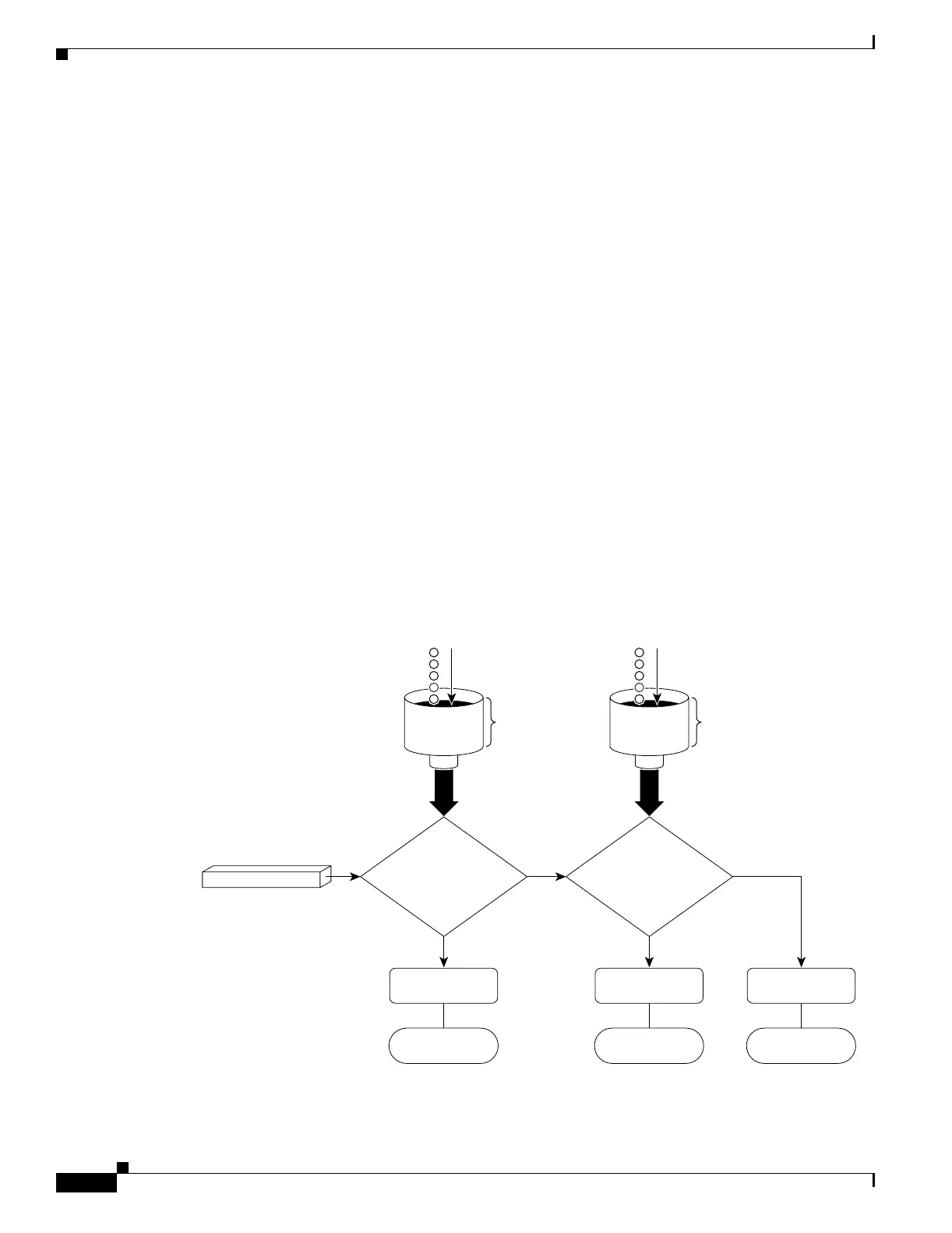26-24
Catalyst 3750 Metro Switch Software Configuration Guide
78-15870-01
Chapter 26 Configuring QoS
Understanding Hierarchical QoS
Egress Policing and Marking
Egress traffic policing controls the maximum rate of traffic sent on a port. A policer defines the
bandwidth limitations of the traffic and the action to take if the limits are exceeded. It is often configured
on ports at the edge of a network to limit traffic into or out of the network. In most policing
configurations, traffic that falls within the rate parameters is sent. Traffic that exceeds the parameters is
considered to be out of profile or nonconforming and is dropped or sent with a different priority.
You can configure a two-rate traffic policer within a policy map at the class level, at the VLAN level,
and at the physical level by using the police cir or the police cir percent policy-map class configuration
command. At the physical level of the hierarchy, you can police only the class-default class in an egress
policy attached to an ES port.
You can configure a two-rate traffic policer to limit the transmission rate of a traffic class and mark
actions (conform, exceed, and violate) for each packet. Within the conform, exceed, and violate
categories, you decide packet treatments. In the most common configurations, you configure packets that
conform to be sent, packets that exceed to be sent with a decreased priority, and packets that violate to
be dropped. You can decrease the priority of the CoS, the DSCP, the IP precedence, or the MPLS EXP
bits in the packet.
The two-rate policer manages the maximum rate of traffic through a token-bucket algorithm. The
algorithm uses the configured committed information rate (CIR) and the peak information rate (PIR) rate
values to control the maximum rate of traffic allowed on a port at a given moment in time. The algorithm
is affected by all traffic leaving the port, and it manages network bandwidth when several large packets
are sent in the same traffic stream.
A token bucket is provided for the CIR and the PIR as shown in Figure 26-10.
Figure 26-10 Egress Two-Rate Policing and Marking Flowchart
No
PIR
Peak burst
size (Be)
Ye s
Action
Is packet
size of B larger
than number of tokens
available in PIR
bucket?
Is packet
size of B larger
than number of tokens
available in CIR
bucket?
Packet of size B
Violate
No
Ye s
Action
Exceed
Action
Conform
CIR
Conform burst
size (Bc)
98723

